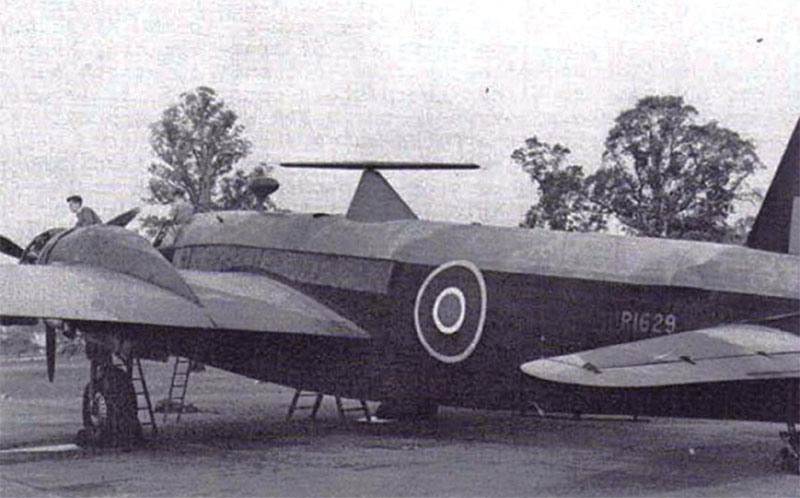Eyes Strike
 Col Mandeep Singh (retd)
Col Mandeep Singh (retd)
In January 2024, Ukraine claimed to have destroyed a Russian A-50 Airborne Early Warning and Control System (AWACS) aircraft. Though the loss was not confirmed by Russia, it was generally agreed by most military analysts that the incident had seriously degraded Russia’s capability to conduct air operations. Airborne early warning (AEW) aircraft are designed to detect aircraft, ships, vehicles, missiles and other incoming projectiles at long ranges, and play an important role in the conduct of air operations.
Ever since its introduction, AEW technology has greatly enhanced the detection capabilities of the side that has used it. The capability to ‘see’ in real-time even low-flying strike aircraft, meant that the enemy aircraft could no longer hide and could be engaged well before the perceived threat became real or threatening. The advantage of using aerial platforms to increase the detection range can be seen in the table given below:
| Platform | Platform Height feet (metres) | Detection Range | ||
Target Height 0 feet (0 m) | Target Height 1000 feet (305 metres) | Target Height 30,000 feet (9144 metres) | ||
| Tower | 100 (30.5) | 12 (22) | 51 (94) | 225 (418) |
| Helicopter | 1000 (305) | 39 (72) | 78 (144) | 252 (467) |
| Aerostat (small) | 3000 (914) | 67 (124) | 106 (196) | 280 (519) |
| Aerostat (large) | 10,000 (3048) | 123 (228) | 162 (300) | 336 (622) |
| Fixed-wing aircraft | 30,000 (9144) | 213 (394) | 252 (467) | 426 (789) |
| High-altitude aircraft | 60,000 (18,288) | 301 (557) | 428 (557) | 514 (952) |
From the table, it is apparent that the maximum advantage is accrued from the use of AEW/AWACS. A solitary AEW&C aircraft flying at 9,000 metres (30,000 feet) is capable of covering an area of 312,000 square kilometres (120,000 square miles) while three such aircraft in overlapping orbits are capable of covering an area equal to all of Central Europe. As the additional capability is integrated into these systems, to enable them to exercise command and control functions in aerial engagements by informing and directing friendly fighter and attack aircraft, these are designated as AEW&C systems or the AWACS.
The increased electronic visibility coupled with the capability of command and control gives the user of AEW/AWACS an asymmetrical advantage over its adversary to the extent that no side that has used it has ever lost an air battle.

Wellington with rotating radar antenna
The first AEW aircraft was a Royal Air Force Vickers Wellington bomber that was fitted with a rotating antenna array, developed as an ‘Air Controlled Interception’ to cover the North West approaches to the United Kingdom where German long-range Focke-Wulf Fw 200 Condor aircraft were threatening shipping. It was later tested for use against aerial targets and then for possible use against German E boats. Another radar equipped Wellington with a different installation was used to direct Bristol Beaufighters toward Heinkel He 111s, which were air-launching V-1 flying bombs.
On the other side of the Atlantic, the United States (US) had its own reasons to develop the AEW as the US Navy grappled with the Japanese kamikaze and low-flying torpedo bombers threat. In 1944, US designers proposed installing a long-range search radar in a US naval aircraft as a counter to low-flying Japanese torpedo bombers. A carrier-based TBM Avenger was fitted with an S-band—2 to 4 GigaHertz (GHz)—AN/APS-20 search radar under Project Cadillac. Its antenna—eight feet in diameter and rotating six times per minute—was fitted in a radome beneath the fuselage of the aircraft, which was redesignated the TBM-3W. At altitudes of 2,000 to 5,000 feet, the TBM-3W could detect a plane flying 500 feet above the water at a range of about 75 miles.
The next step in the AEW programme, called Cadillac II, was to place a fighter-director team in the aircraft. As the Avenger was too small, ex-Army Air Force B-17G Flying Fortress bombers were fitted with the APS-20 and designated PB-1Ws. These older aircraft, however, were not successful and the US Navy switched to the land-based four-engine Lockheed Constellations with an improved APS-20 in an under-fuselage radome and an APS-45 height-finding radar in a large dorsal radome. In the post-war period, the developments in AEW systems took off more rapidly as the two power blocks raced to gain supremacy in the air though the Soviet Union got its first AEW system, using the Tu-116, only in 1965.
The more advanced, and recent systems include the better-known E-2C Hawkeye and E-3 Sentry of the US and the Russian Beriev A-50, while the Chinese AEW systems include the KJ-2000. Netra, the Indian AWAC system has been developed by the Defence Research and Development Organisation (DRDO) and is mounted on the Brazilian Embraer EMB-145 airframe. Besides this, the Indian Air Force (IA)F also operates three Israeli EL/W-2090 systems, mounted on Ilyushin Il-76 airframes, the first of which first entered service in 2009.
The AEW systems have also been mounted on helicopters with the United States’ Sikorsky CH-37 Mojave first entering service in 1956. The other systems include the British Sea King ASaC7, the Russian-built Kamov Ka-31 and the AgustaWestland EH-101A AEW of the Italian Navy.
The first modern aerostat (moored balloons) was the Tethered Aerostat Radar System which was deployed by the US in 1980. It was used for low-level air surveillance to prevent air space violations and to intercept drug trafficking. Though the aerostats have been used primarily for border surveillance, they also have an important role in air defence tasks and as AEW systems for surface
Subscribe To Force
Fuel Fearless Journalism with Your Yearly Subscription
SUBSCRIBE NOW
We don’t tell you how to do your job…
But we put the environment in which you do your job in perspective, so that when you step out you do so with the complete picture.








